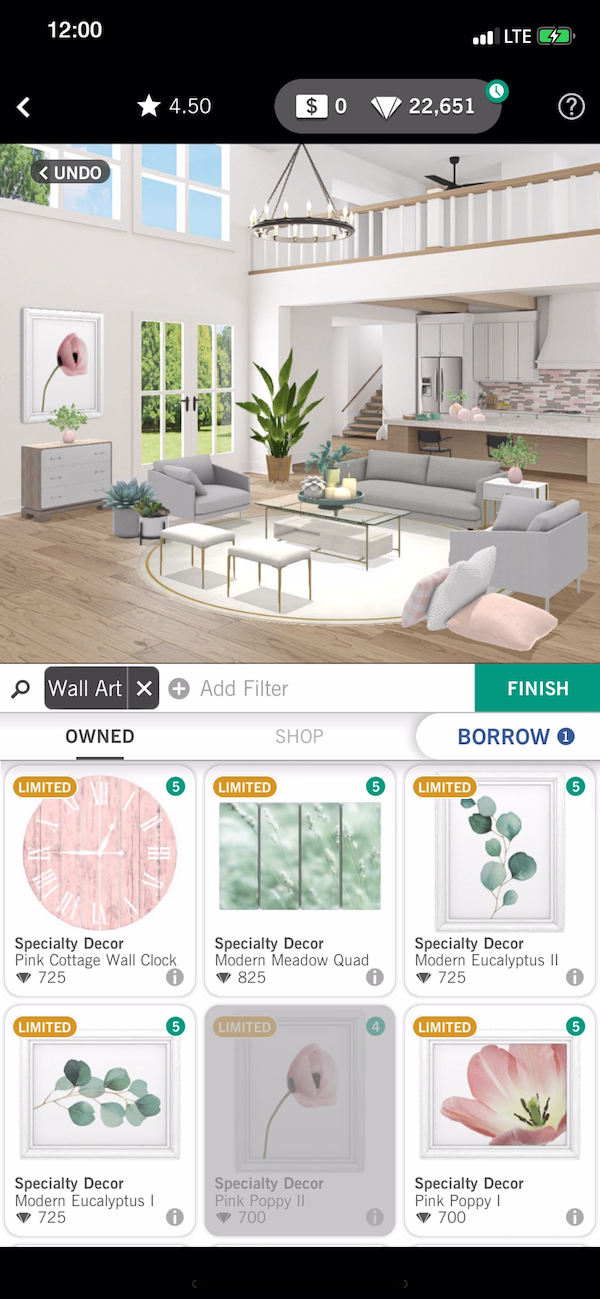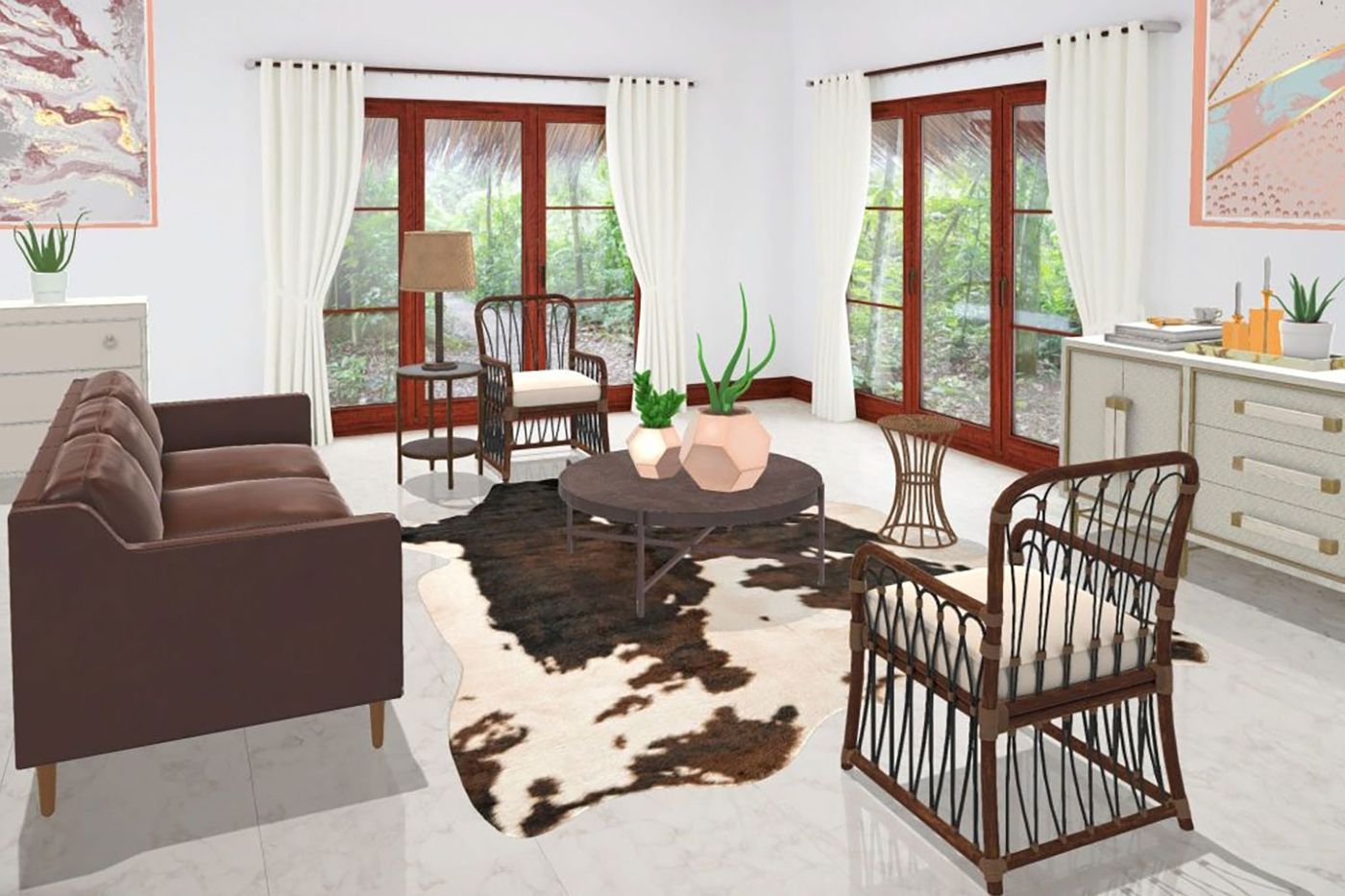Surreal but true: Right now, as thousands of professional interior designers across the country are hustling to put together presentations, choose colors, and find just the right statement piece for the living room, there’s a far larger group of people—over a million—playing a video game in which they do the very same things. They do not get paid for it. In fact, they’re often paying for the privilege.
The immense popularity of design-oriented “casual” video games (they’re mostly played on smartphones, and mostly by women) tends to evoke only slight surprise, and maybe an eye roll or two among designers, who are all too familiar with the glamorization of the profession. However, these games have mostly existed in a parallel digital universe and have rarely crossed over into the physical world. That’s changing.

Glu Mobile, the developer of one of the most popular design-oriented video games, Design Home, announced last week that it was launching an in-game e-commerce store, allowing users to shop for real home decor within its platform.
Initially, the selection will be confined to a white-label brand the company is calling Design Home Inspired, which ranges from lighting and rugs to bedding and tabletop, with prices from $10 to $1,500. However, Design Home also announced a partnership with Williams-Sonoma to feature the company’s goods in its virtual challenges, joining sister brands West Elm and Pottery Barn. If Glu can find success selling its own goods to users, it seems likely that big home retailers will want in.
“The goal here is, if we feel like we got the level of success we’re assuming we’ll have, we’ve laid the foundation for brand partners to participate,” says executive vice president Mark van Ryswyk. “We want to continuously challenge what it means to play a game and what it means to shop.”
Design Home is a fairly representative sample of the genre of design-oriented games. Players are tasked with design challenges (called “events” in the world of the game) and then “buy” decor and furnishings to complete the project. The projects are then submitted to the community, and users get feedback from other players. The game itself is free; however, like most casual games, players can purchase in-game currency (“diamonds”) with real-world cash.
Some of the decor—curtains, rugs, fabrics—is invented by the Design Home team, but all of the furniture and many of the accessories represent actual merchandise from brands, ranging from Kathy Kuo Home to Serena & Lily to Loloi. The result is an interesting mashup of reality and invention that van Rsywyk says provides brand partners with invaluable exposure to their target audience. (The exposure seems to mostly go one way: He says that while Glu does share data with its brand partners, what “sells” within the video game is not necessarily the best indicator of what will sell in real life).
Design Home has over one million daily active users, and is frequently among the top 50 games in the iTunes store. Van Ryswyk says that the game’s appeal over its competitors in a crowded marketplace is its ability to transcend simple point-and-click engagement and connect more personally to its players with real-world trends. His team is frequently scouring design magazines and tracking influencers to identity trends to work into their design challenges—in that regard, unlike Candy Crush or FarmVille, Design Home was already seeking to connect with the real world long before it started selling lamps and mirrors to players.
“It’s a sizable audience that loves to engage with something where they feel like they’re learning or discovering something they can share with a friend,” he says. “When they step into their homes and recognize a West Elm couch, it’s a conversation starter.”
Van Ryswyk is optimistic that the e-commerce store can be a growth area for the company, but he says he’s not looking to turn the game into a playable Wayfair. “You can break the player’s sense of escape by indexing too much toward one thing,” he says. “At the heart of what we do is entertaining our users and creating this playground. We don’t want to lose sight of that.”
Homepage image courtesy of Design Home





























